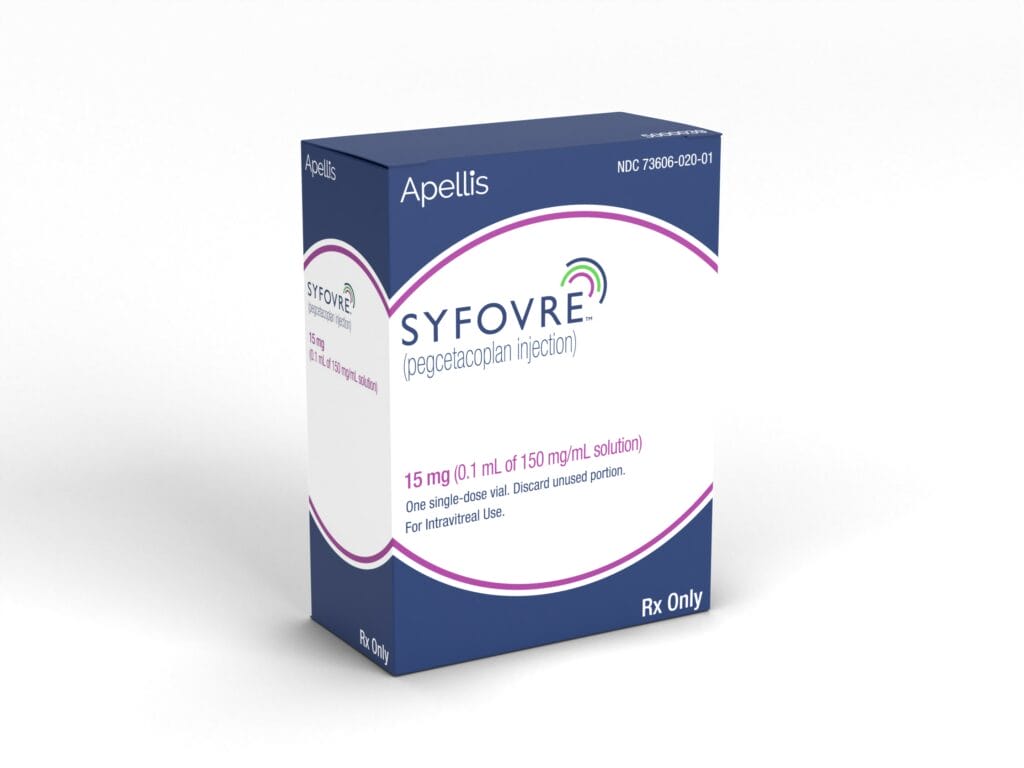April 11, 2023
WALTHAM, Mass. — The U.S. Food and Drug Administration has approved SYFOVRE (pegcetacoplan injection) for the treatment of geographic atrophy (GA) secondary to age-related macular degeneration (AMD). From global biopharmaceutical company Apellis Pharmaceuticals, Inc., SYFOVRE is the first and only FDA-approved treatment for GA, a leading cause of blindness that impacts more than one million people in the U.S. and five million people worldwide.1,2
“The approval of SYFOVRE is the most important event in retinal ophthalmology in more than a decade,” said Eleonora Lad, MD, PhD, lead investigator for the OAKS study, director of ophthalmology clinical research, associate professor of ophthalmology, Duke University Medical Center. “Until now, there have been no approved therapies to offer people living with GA as their vision relentlessly declined. With SYFOVRE, we finally have a safe and effective GA treatment for this devastating disease, with increasing effects over time.”
“Today marks an extraordinary milestone for patients, the retina community, and Apellis. With its increasing effects over time and flexible dosing, we believe that SYFOVRE will make a meaningful difference in the lives of people with GA,” said Cedric Francois, MD, PhD, co-founder and chief executive officer, Apellis. “GA is a complex disease that the field has spent decades trying to address, so we are humbled and proud to bring forward the first-ever treatment. Thank you to all who helped make this moment a reality.”
The approval of SYFOVRE is based on positive results from the Phase 3 OAKS and DERBY studies at 24 months across a broad and representative population of patients. SYFOVRE is approved for GA patients with or without subfoveal involvement and provides dosing flexibility for patients and physicians with a dosing regimen of every 25 to 60 days. In the OAKS and DERBY studies, SYFOVRE reduced the rate of GA lesion growth compared to sham and demonstrated increasing treatment effects over time, with the greatest benefit (up to 36% reduction in lesion growth with monthly treatment in DERBY) occurring between months 18-24.
“For the first time ever, we are celebrating the approval of a treatment for GA,” said Jeff Todd, president and chief executive officer, Prevent Blindness. “This is a historic and hopeful day for all GA patients and their care partners, who have been waiting for a treatment for this relentless form of vision loss.”
The safety profile of SYFOVRE is well-demonstrated following approximately 12,000 injections. The most common adverse reactions (≥ 5%) reported in patients receiving SYFOVRE were ocular discomfort, neovascular AMD, vitreous floaters, and conjunctival hemorrhage.
References
1 Rudnicka AR, Jarrar Z, Wormald R, et al. Age and gender variations in age-related macular degeneration prevalence in populations of European ancestry: a meta analysis. Ophthalmology 2012;119:571–580.
2 Wong WL, Su X, Li X, et al. Global prevalence of age-related macular degeneration and disease burden projection for 2020 and 2040: a systematic review and meta-analysis. Lancet Glob Health 2014;2:e106–116.





